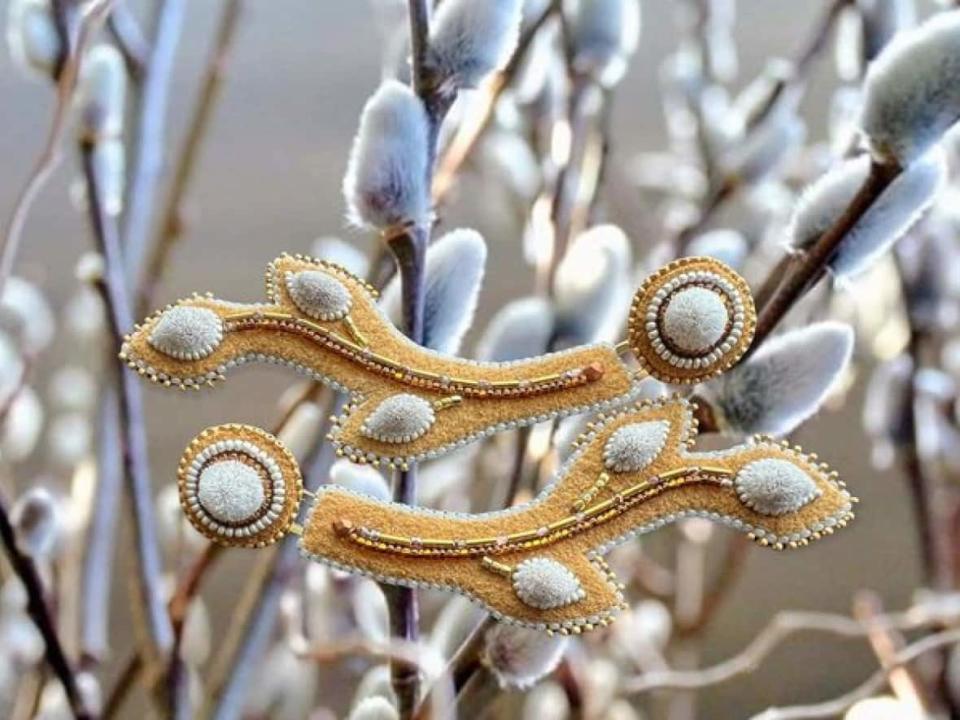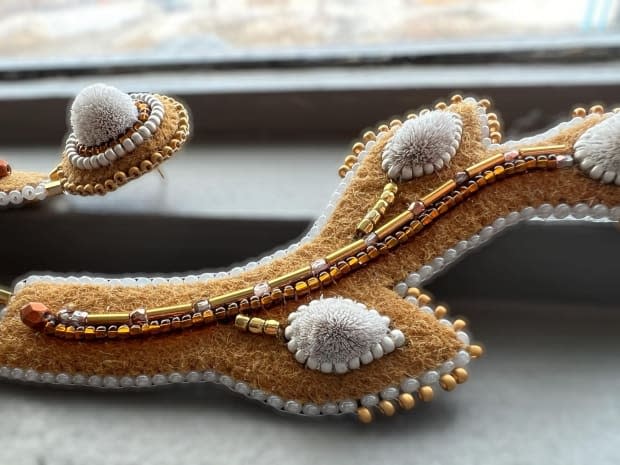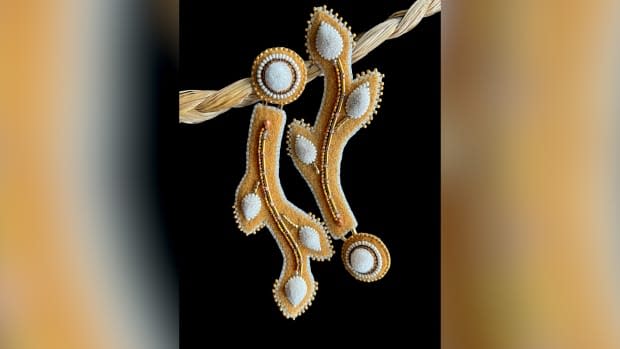Dene woman makes earrings like you've never seen before

It's a sure sign of spring in the North.
And these amazing earrings look like the real thing.
Furry catkins, growing on the branches of a willow.
But look a little closer and you will see that these are pure imagination … and art.
"I use actual beads and caribou hair to replicate the plant," said Vashti Etzel from Faro, Yukon.
In her dialect, willows are known Gule det'ele

Vashti is Shuhta Dene and Kaska Dene and has been inspired by her natural environment since she was a little girl.
"My mother studied Botany and I became inspired at a young age with plants and traditional medicines," she said.
Etzel said willows are "luxurious."
Especially in spring when the fluffy little catkins are waking up after a long winter.
"It's so illuminating to have a vase of the Gule det'ele in your home," she said.
And perhaps even more illuminating when worn as jewelry.
"These are statement earrings," she said.
They certainly are.

"Statement pieces are usually wearable art pieces that are manifestations of our cultural and traditional ways of life. This goes way back to our ancestral teachings."
Etzel replicates the velvety tips with caribou tufting.
The resemblance is remarkable.
"We have so many traditional natural materials that can mimic the look of nature itself."
Etzel posted her earrings in CBC North's Arctic Sewing Room Facebook group.
People were blown away.
"Amazing, beautiful … almost real-like," said one member of the group.
"Oh Wow!! Just so amazing! Such beautiful stitching and bead work!" said another.
Etzel said these earrings resonate with people because they have powerful memories of harvesting these plants.
"It is a connection to our ancestors. It's how we empower ourselves and carry on those legacies of our people," said Etzel.

